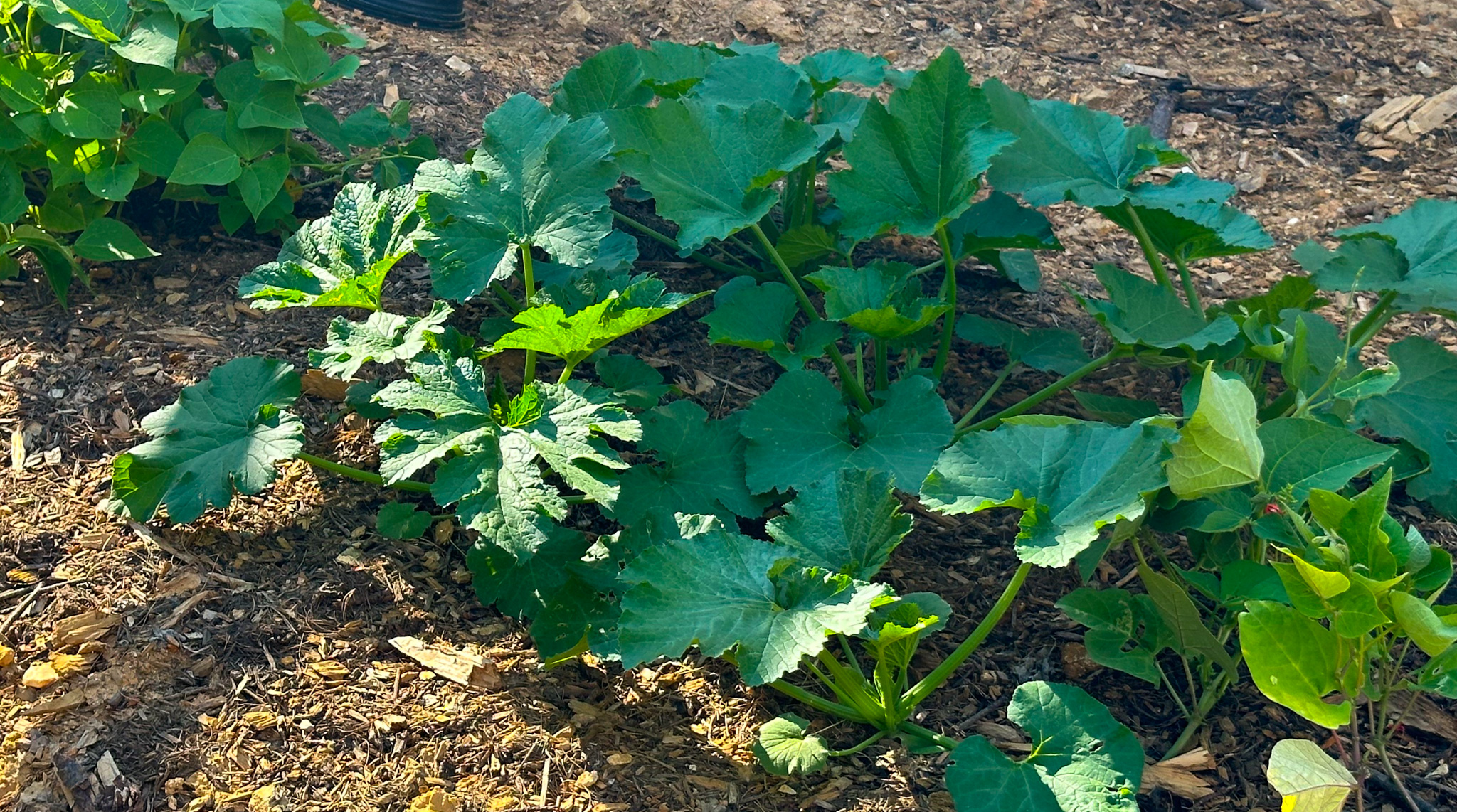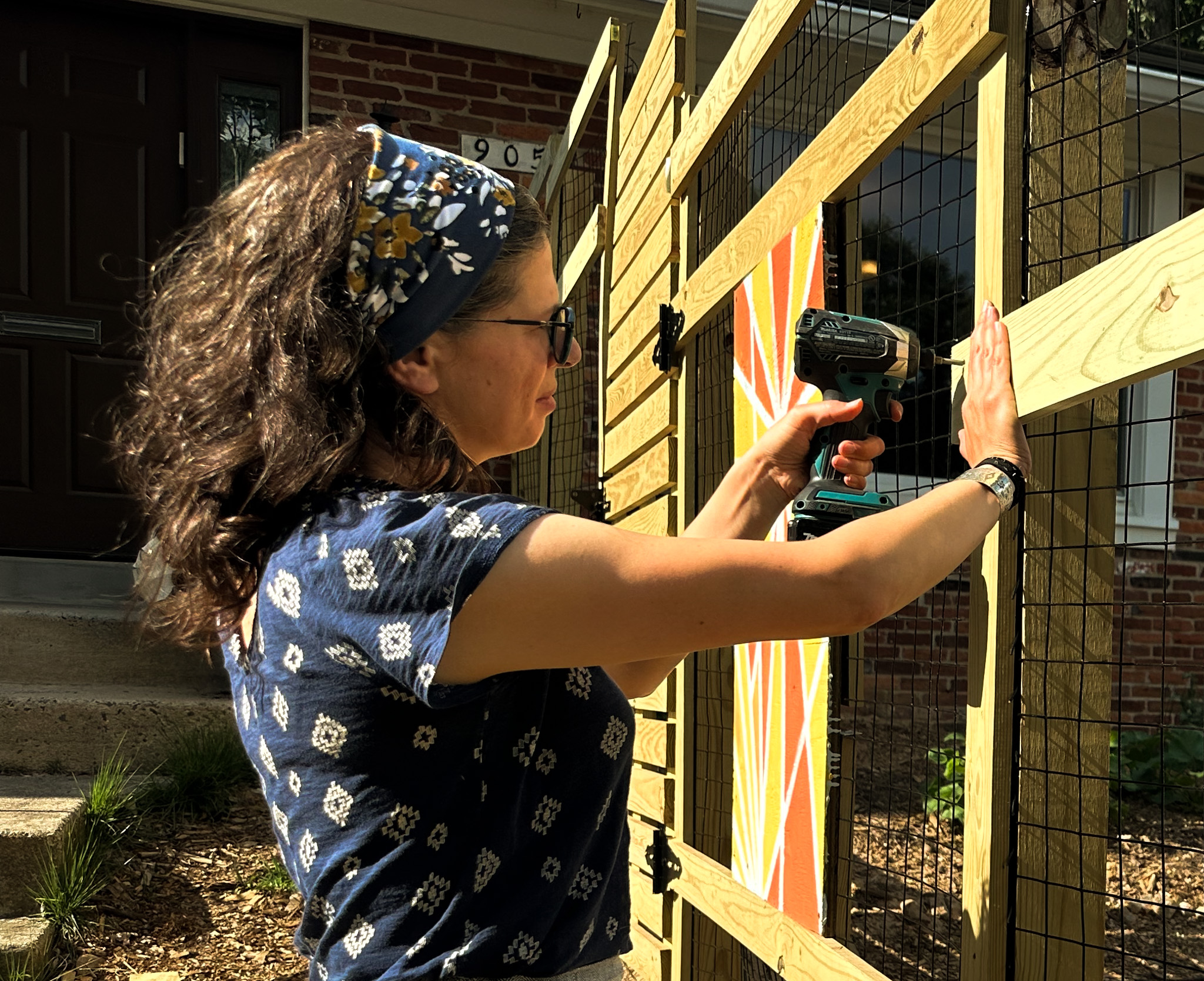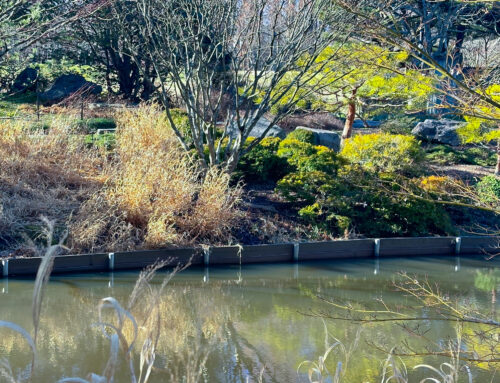יְגִ֣יעַ כַּ֭פֶּיךָ
The Labor of your Palms
Shortly before the Jewish holiday of Purim, a truly majestic Pine tree, double trunked and reaching for the heavens, came crashing down at the end of my block. Thankfully it damaged very little, but I’m sure dealing with the aftermath was a pain for it’s owners, and I was sad to see it go. Still, as I saw the arborist trucks line up at the end of the block I realized there was an opportunity here – free Arborist chips!
A truck full of arborist chips is a tremendous amount of mulch. I have never needed enough to justify a whole truck before, and arborists generally don’t want to give you a half load. They just want to dump the whole thing and be done with it. This time though, I had a lot of lawn I wanted to kill. A full load was exactly what I needed. I also knew it was unadulterated. No weeds, no poison ivy- just fragrant pine chips and needles. Time to sheet mulch!
Sheet mulching is sometimes touted as a “no till” method of getting rid of lawn and creating a new planting bed, best because it does not disrupt soil structure and nutrients etc….etc…but I like it because I am lazy, well, relatively lazy. Instead of digging up all the sod and disposing of it, and then covering it with three inches of mulch, I left the lawn as is and just deposited a foot of mulch on top of it. I’d been taught that one must lay cardboard or landscape fabric or paper down first and then shovel the mulch on top of this, but I was too lazy to do this and didn’t have enough paper or cardboard anyhow.
Also, I did my research. Turns out, that paper or cardboard layer is actually not necessary to kill lawn. A thick layer of mulch 6-12” deep will do this all on its own.
When I say I’m relatively lazy, I don’t mean that this was an easy task. It took me a month to complete. I had paid work that demanded attention and only a couple of hours to devote to mulching most days. Also my only assistants were my spouse who works full time and my kids, who, when they are available, get bored and prefer to climb the pile instead. Also….well….I mostly work at a desk. I’m not as strong, efficient or skilled as a professional landscaper.
I considered hiring someone, but at the time, work was slow enough that I had a few hours per day, so that didn’t seem to make sense. Also, shoveling mulch, is totally doable for me, and rewarding, if I’m willing to be patient.
The first rule of thumb is not to be intimidated by the size of the hill. Also, in my new neighborhood, to be willing to be known as the crazy new neighbor from Seattle with a mountain of mulch in her driveway. A couple weeks later, every time I dug in, the pile steamed as its decomposing insides were exposed. The pile was cooking beautifully. Arborist mulch has all kinds of branches and large pieces that get in the way of a shovel. Sometimes I found shoveling into a bucket with my hands to be he most effective option. The decomposing pine needles kept my fingers warm.
I got to know my yard really well, especially the slope in my backyard. To get the wheelbarrow up half way I needed a running start. That’ll warm you up real quick!!
By the time I was done it was passover.
On passover we celebrate our liberation from slavery in Egypt. As slaves, we were worked בפרך– with work meant to break us. As I shoveled mulch, I thought to myself how much joy I find in this work, in feeling my body function, in seeing that mulch pile shrink and the foundation of my garden grow. This joy, however, stems from my freedom to choose this labor and to abandon it, if I choose, with all but my ego intact. Also, I was able to do this, and that is not something to take for granted either.
Each shovelful was a meditation on gratitude and a moment to explore my own strengths and weaknesses, both physical and mental. Best to hold the shovel a certain way to avoid irritating a tight shoulder, best to take a break, assess my progress, take a deep breath and regroup.
After passover I started to work on our deer fence (see previous post). I paid a contractor to put the posts in. I wasn’t ready to figure that part out out, but the rest we did ourselves, me, my husband, my kids and a generous friend. This is decidedly not the nicest fence I have designed and the only one I have ever built. It looks like a novice project. It is a novice project. Building is an exercise in humility. It’s a great way to find all the holes in your best laid plans, or in this case, in your really sloppy plans. I would never design a fence this way for a client. I would be a lot more thorough, and I would review the design with a competent carpenter. For this fence though, I made it up as we went along. It took a long time and I kept running into problems I could have headed off with a good design strategy. I suppose I learned the value of my own profession as I went along. Some good elevation drawings would have been a good idea.
Seven weeks later, the holiday of Shavuot arrived and the fence was done, more or less. The seeds are in the ground, way too late, and I’ll be surprised if I managed to harvest much even if I keep to an intensive watering schedule. Next year though, I have dreams of a wonderful vegetable garden with a nice section for all those perennials and annuals I can’t grow outside the fence.
When I say, God willing, I mean this. Gardening is an exercise in humility. You can do everything right, and a heat wave or a bout of aphids or some other disease wipes out everything.
In the time of the temple, the holiday of Shavuot was primarily a harvest festival in which farmers brought offerings of first fruits and barley. These offerings are brought with prescribed language about slavery and redemption. It is a mark of freedom to choose what to plant and what to do with what you have planted. To plant at all is to take a risk. All that work could be for naught. A good harvest is a time for deep exhalation. It worked.
It is easy to believe that the fruits of your labor are your own. You worked, you sweated, you watched over it carefully. Yet, none of it would be there without the care of the almighty. This harvest, like anything God given, is merely a loan, and the measure of who you are as a person is what you do with it. To give, of the first fruits of your hard labor is to delay the joy of your harvest, but also to acknowledge the generosity of the lender.
To give, is to believe that you will have surplus. To have surplus is to be truly free. If I choose to be lazy and not work today, tomorrow I am lucky enough to still have what to eat. If I work because otherwise I will starve and if manual labor is my only choice, an injury is terrifying. I might work beyond my limits for lack of a real choice. It would be עבודת פרך– work that breaks you.
The holiday of Shavuot also commemorates the giving of the torah on Mt. Sinai. This torah includes so many laws about labor, about treatment of laborers, about protection of the poor and the defenseless. It is a system of limits, safety nets and preservation of human dignity. There are parts of this holy book that I find troubling, I will not pretend otherwise. Yet, as I screwed in boards, shoveled soil and struggled with metal mesh, I thought a lot about the importance of this system of laws and values. This system recognize the fragility of the worker, even the strongest among us. We are told that all workers, and even our beasts of burden, must rest on the Sabbath. Those who fall must have a safety net and those who abuse their workers must pay damages. Wages must be paid on time. To work in a system with these safeguards is to know that if you can’t work any longer, you will be OK. Your work will not be עבודת פרך– work that breaks you.
As a designer, who mostly builds in the virtual world of drawings and specs, I treasure opportunities to do some manual labor, however sloppy. When I find myself building or digging or moving large trees, I get a glimpse of what I am tasking laborers to do. I see where experience helps, or how many sets of hands are ideal for a task. I come to value the large store of knowledge at the fingertips of a carpenter, and to marvel at how well seasoned masons make moving large and heavy things look relatively easy. To DIY a project is to truly appreciate the value of years of mental and physical expertise. What took me a month, would take a team of experienced and strong landscapers about two days. It would be neater, stronger and much nicer looking. it is good to take a moment to appreciate this.
For the record, very few patches of grass or weeds are peeping up from under all that mulch. The fence is up and so far the deer have stayed out. There is something growing in there too. We’ll see how it does. I can’t bring an offering at the temple, but I will feel truly blessed if I grow enough vegetables to pack up a box and bring it over to the friend who helped build the fence. That would be a true joy. Even better if I manage to make some meals and invite some friends to enjoy them.
יְגִ֣יעַ כַּ֭פֶּיךָ כִּ֣י תֹאכֵ֑ל אַ֝שְׁרֶ֗יךָ וְט֣וֹב לָֽךְ׃
Blessed are you who eats of the labor of your palms, and it will be good for you
Psalms 128:2
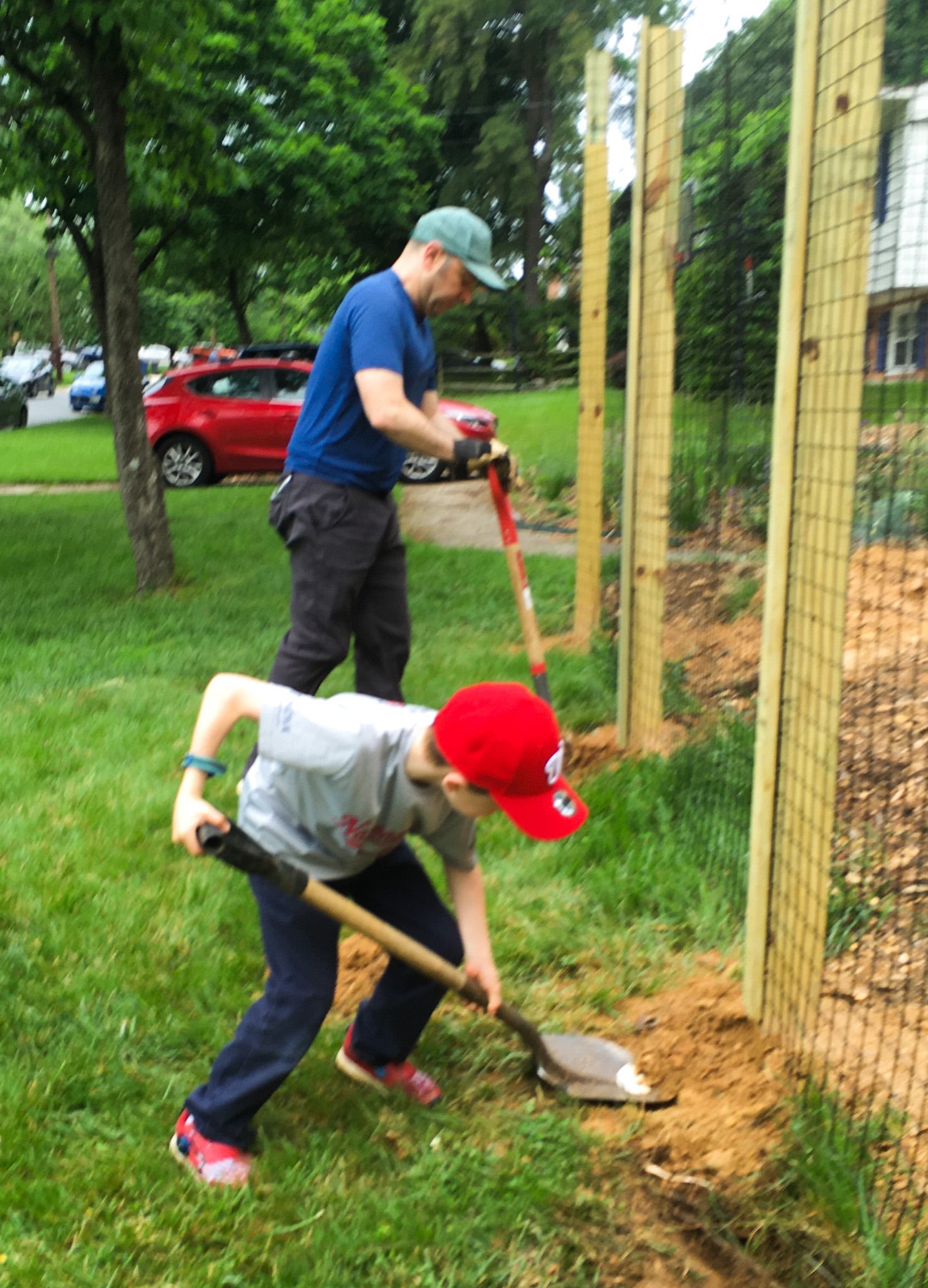
Trusty Helpers
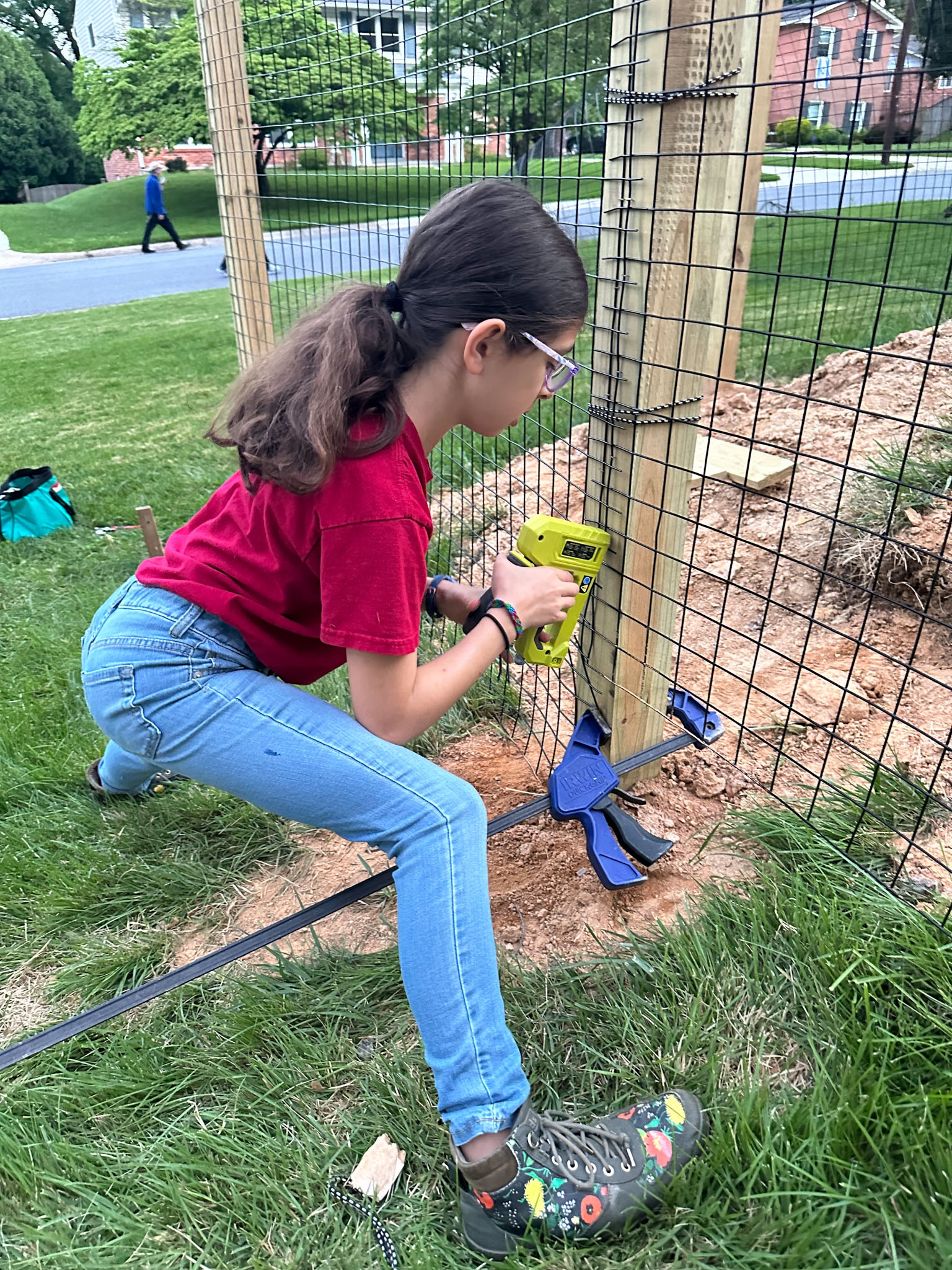
Master Stapler
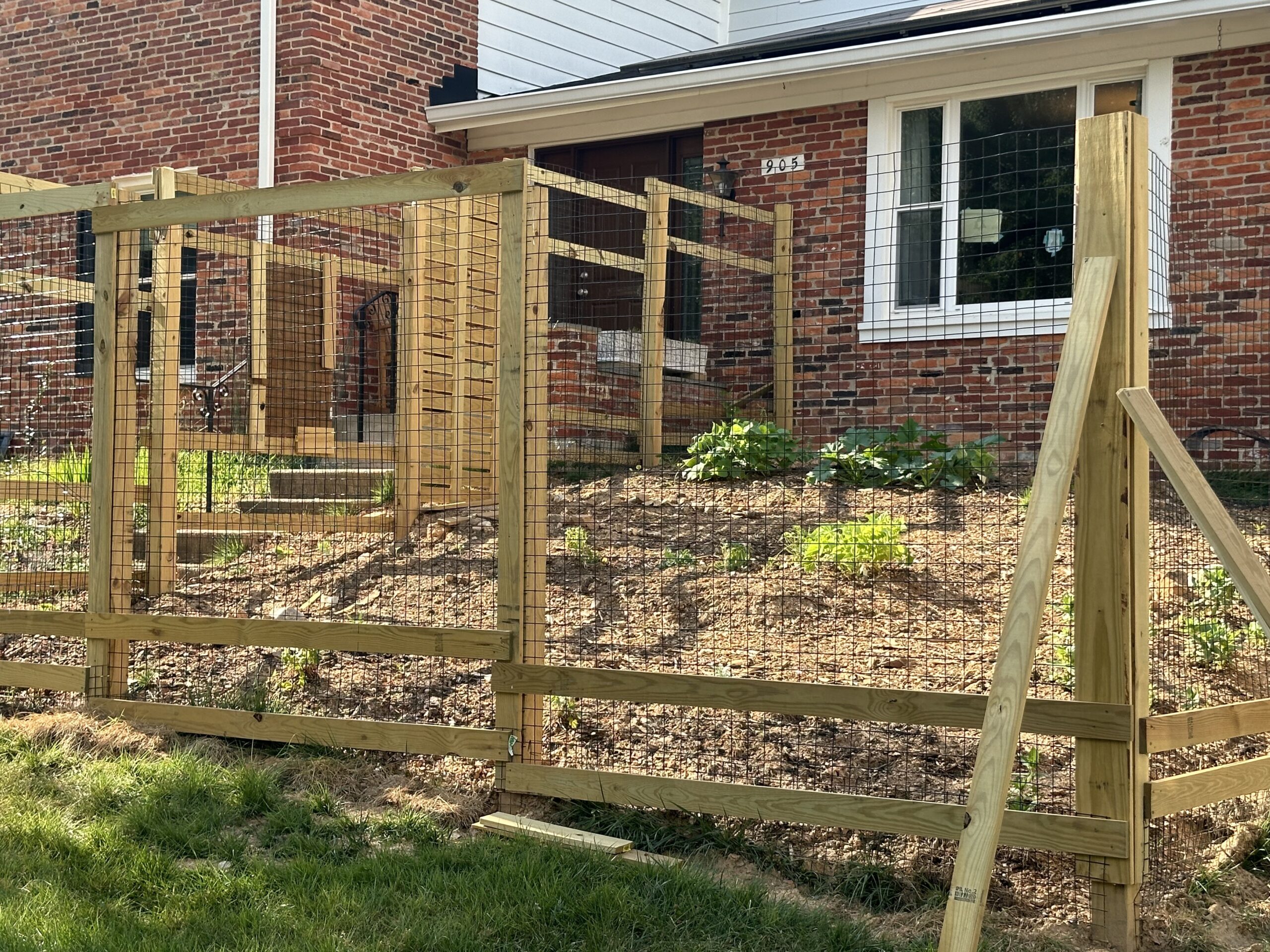
Nascent Vegetable Garden - Note all the mulch!
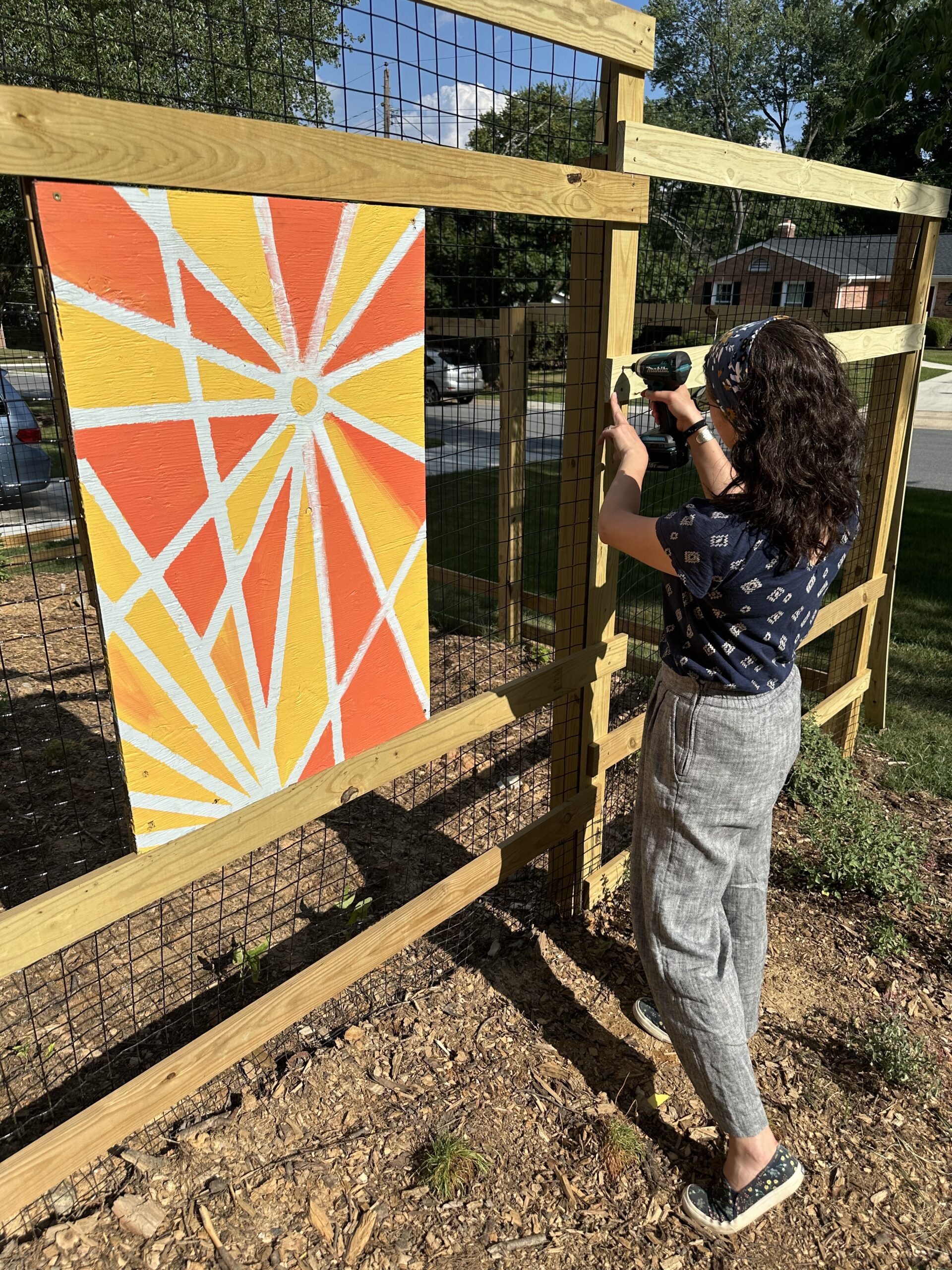
Lots of Drilling
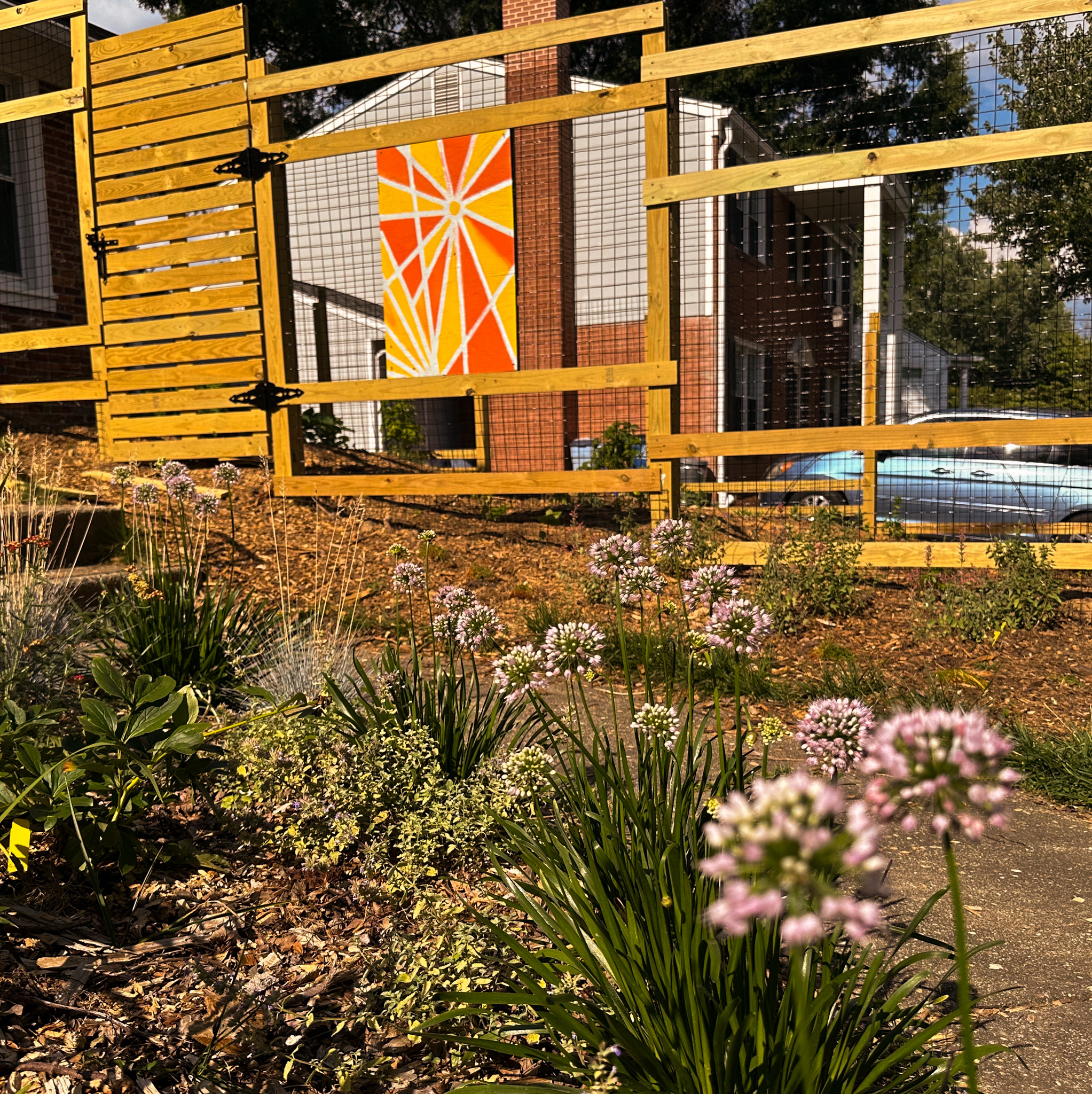
Planting Bed in the Foreground- Also a Sheet Mulching Project
